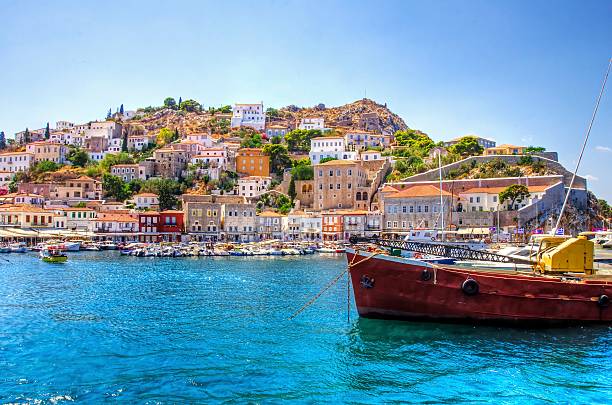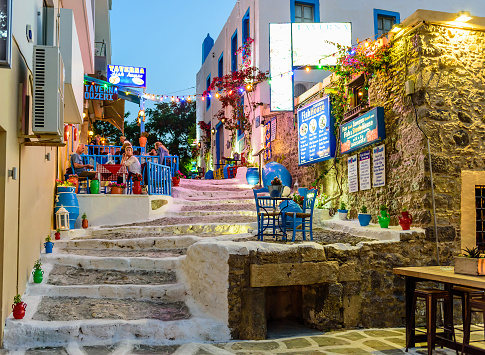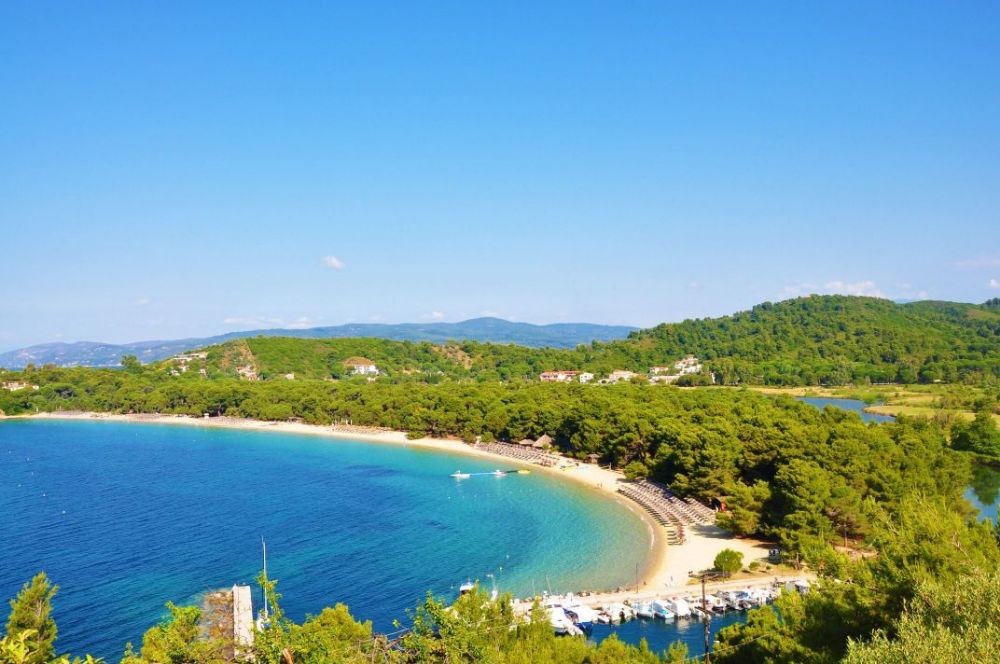Greece has 227 islands – here’s how to choose
Deciding where to visit depends on your entry point, how much time you have, and the type of vacation you want.

Athens, Greece. Picture: Shutterstock
Greece receives approximately 30 million international visitors each year, with many heading to the country’s six main island regions.
Choosing where to visit depends on your entry point — Greece has 15 international airports — and how much time you have.
Ferries are an ideal way to get around, especially if you’re a first-time visitor.
Sights from the sea can be breathtaking and during various island stops vendors come on board selling snacks, like the must-try nougat pies on routes heading to the Cyclades.
Even though some islands may seem close geographically, trips can be long with ferries making multiple stops or not having daily departures. Ferries.gr and Ferryhopper.com are reliable sites for researching and booking tickets in advance, which is advised.
Here’s a look beyond the islands that commonly draw the crowds, and an argument to reconsider a few of the more popular ones.
The Saronic Islands, for a slower pace
From Athens, the Saronic islands are reachable via ferry within an hour or two, offering a convenient escape for the time-strapped.
If you’re seeking an island of serenity and simplicity, rustic and car-free, Hydra is all about walking through cobbled streets or hitching a donkey ride.
Nearby is Aegina, full of fishing villages and notable seafood taverns. But a visit there is worth it alone to see one of Greece’s best preserved sanctuaries — the Temple of Aphaia.

Hydra, Greece. Picture: iStock
The Cyclades and Crete, for partying and recovery
Visitors can reach the Cyclades via a plane or ferry from Athens. The Cyclades have regular ferry routes among their islands, of which Mykonos and Ios are known for dancing nights and mornings away in beach clubs or in private villas.
In the 1970s, the neighbouring island of Paros was so overwhelmed with tourism — it was a party destination, like Mykonos today — that officials temporarily closed the island to foreign tourism in order to rehabilitate. Its endearing white and blue villages are once again filled with bustling cafes and jewellery boutiques.
The well-known Santorini offers sheer elevation, volcanic views and waterfront hotels but a visit proves more rewarding in the off-season, minus the hordes that distract from its beauty.
Head further south and you’ll reach Crete. The birthplace of Zeus is the largest of all the islands. Expect to find especially patriotic residents, sensational produce, memorable drives and a world-class golf course.

Santorini, Greece. Picture: iStock
The Ionian Islands, for architecture
Corfu is architecturally blessed, with the Venetians, French and British all influencing its development. Its towns are cheerful and colourful, painted in a warm palette of straw yellow, pastel pink and orange.
If you’re looking for one island with it all, it’s Kefalonia. Draws include hills perfect for hiking; tiny, secret pebble beaches around the perimeter; unnerving cliffs leading to the calm of Myrtos Beach and storybook towns like Assos.
Distinctive waters surround Kefalonia — an electric neon blue, resulting from falling limestone chemically reacting with seawater.

Assos in Kefalonia, Greece. Picture: iStock
The Dodecanese Islands, for the beaches
Hippocrates was born on the island of Kos, which is known for its history, beaches and windsurfing. To experience hydrotherapy, advocated by the father of medicine himself, head to the thermal baths at Agios Fokas beach.
About 250m from the main beach of the town of Kefalos is a small island topped with a petite church. Religious or not, give the swim a go. You’ll pass over thriving sea life and underwater ruins on the way.

Kos, Greece. Picture: iStock
The Sporades, for hiking and nature
The islands of Skiathos and Skopelos are far more lush and fertile than other regions.
Skiathos’ vast pine forests fall right down to its beaches, with walking trails weaving through the green to reach the blue. Koukounaries Beach draws the sunbathers; Banana Beach draws the naturists. Skiathos is also full of secluded beaches only accessible via boat, like Lalaria Beach.
Skopelos is home to one of Greece’s most heralded churches, Agios Ioannis, which rests atop a 100m-tall rock. Visitors game enough to scramble up the stairs are rewarded with panoramic views and a glimpse of the nearby island Alonissos.

Koukounaries Beach in Skiathos, Greece. Picture: iStock
The Northern Aegean, for relaxing
This region isn’t ideal for island hopping because of the great distances between its islands, but they are abundant, so a visit to one or two will suffice.
Head to Ikaria for secrets of longevity, as one in three of its residents live into their 90s. Or sip on mastiha — tree sap made into an almost pine-flavoured liqueur — in its birthplace of Chios, or ouzo on Lesvos, which makes half of the world’s supply.
To unwind sans alcohol, the natural thermal spas dappled around the Northern Aegean are perfect for soaking away any stresses you may have.
For more news your way, download The Citizen’s app for iOS and Android.
For more news your way
Download our app and read this and other great stories on the move. Available for Android and iOS.









